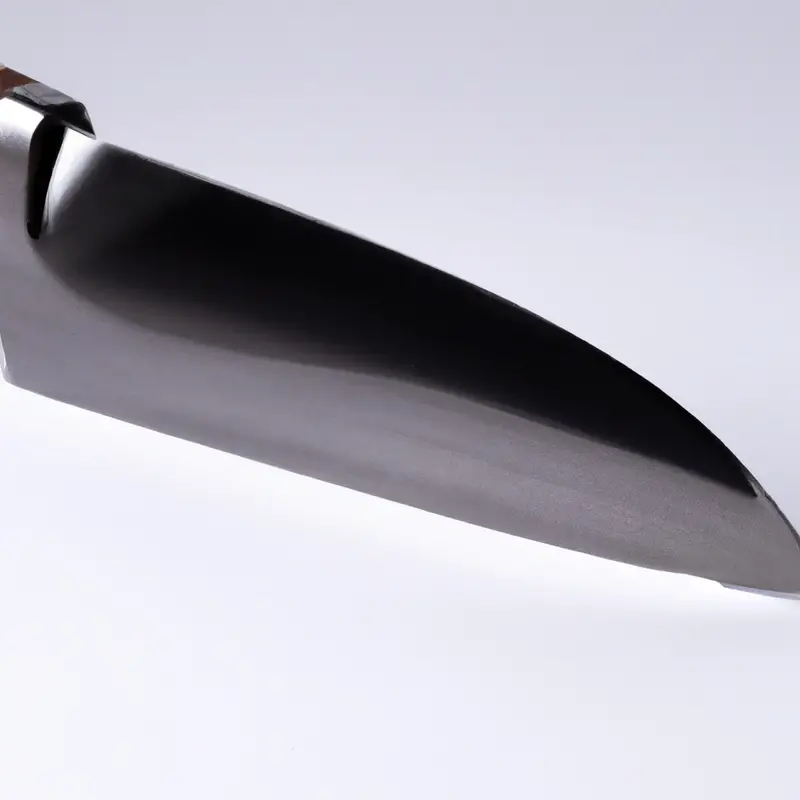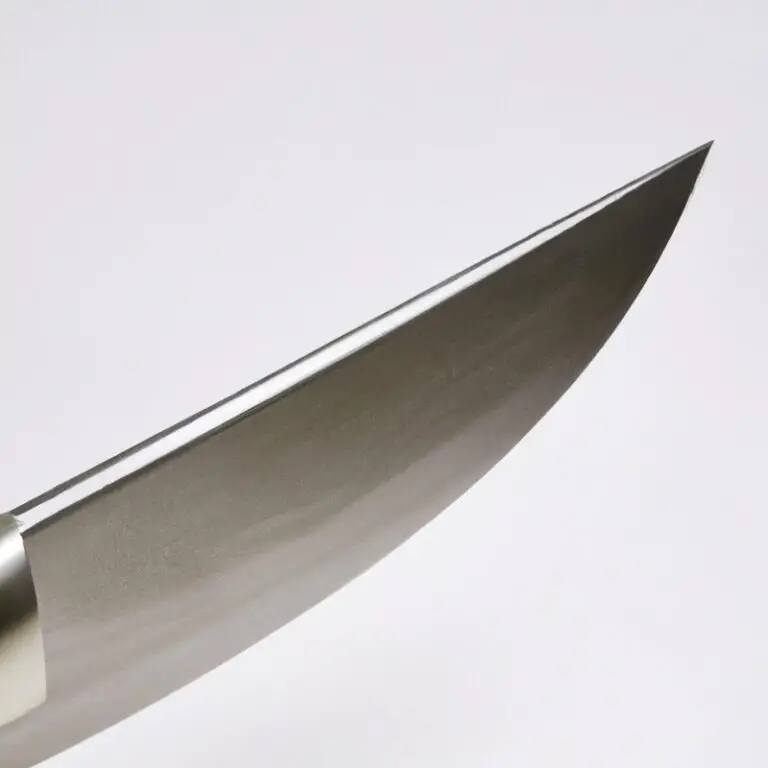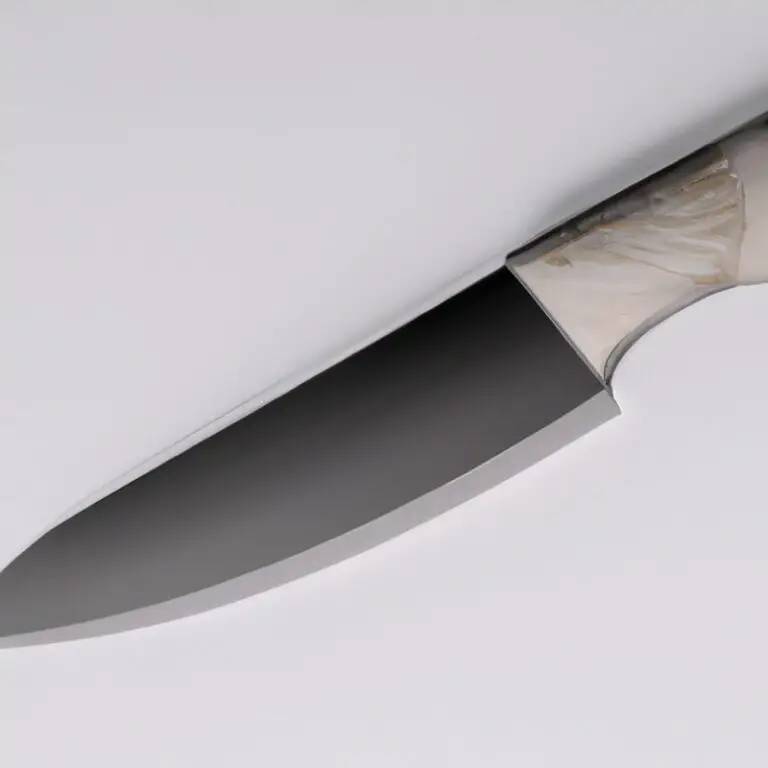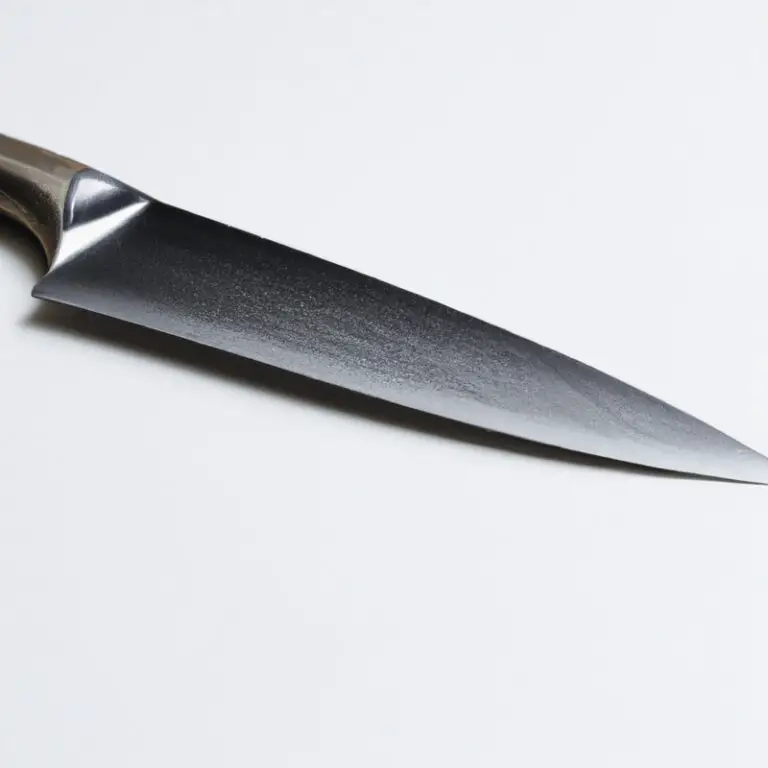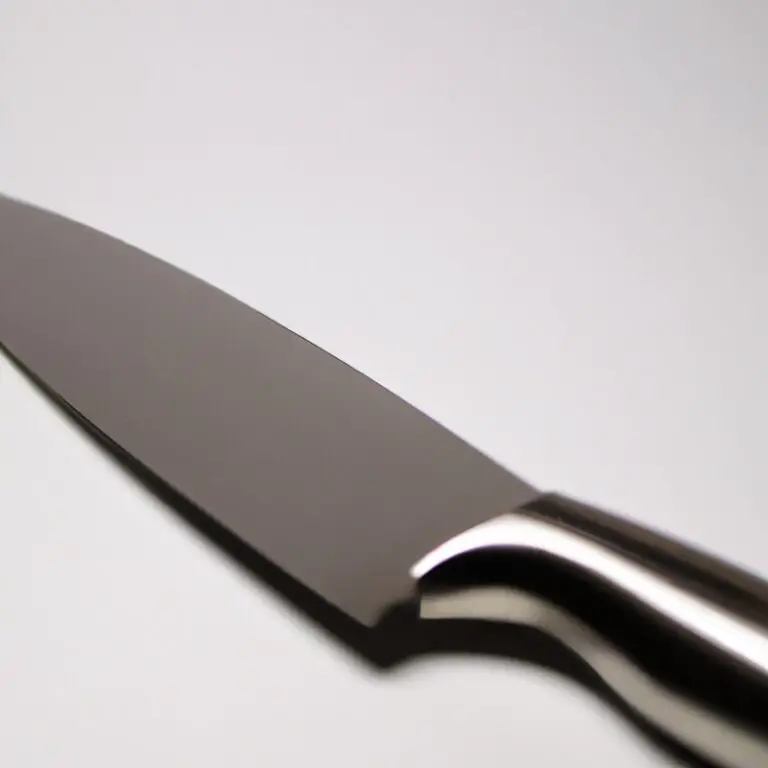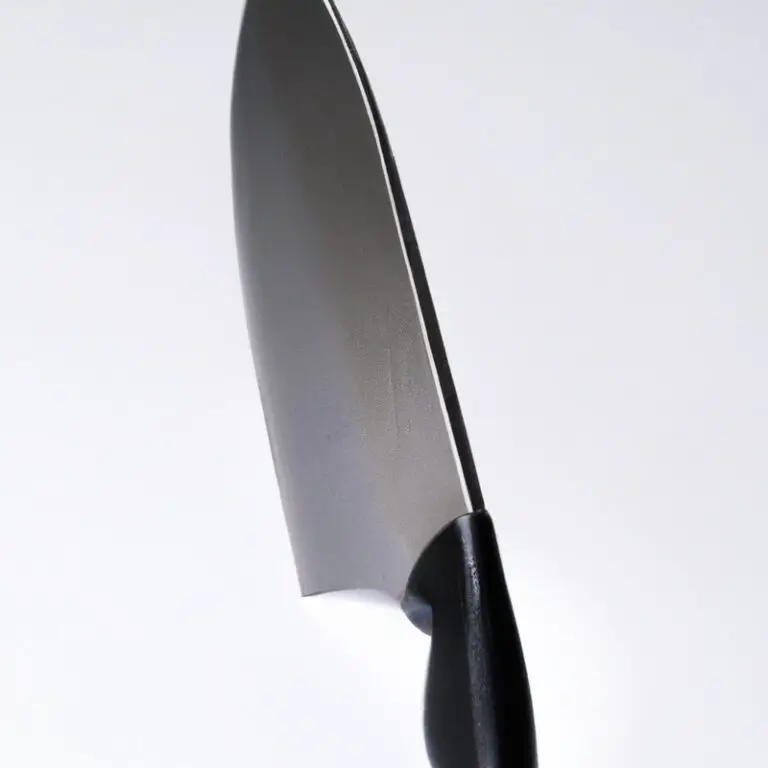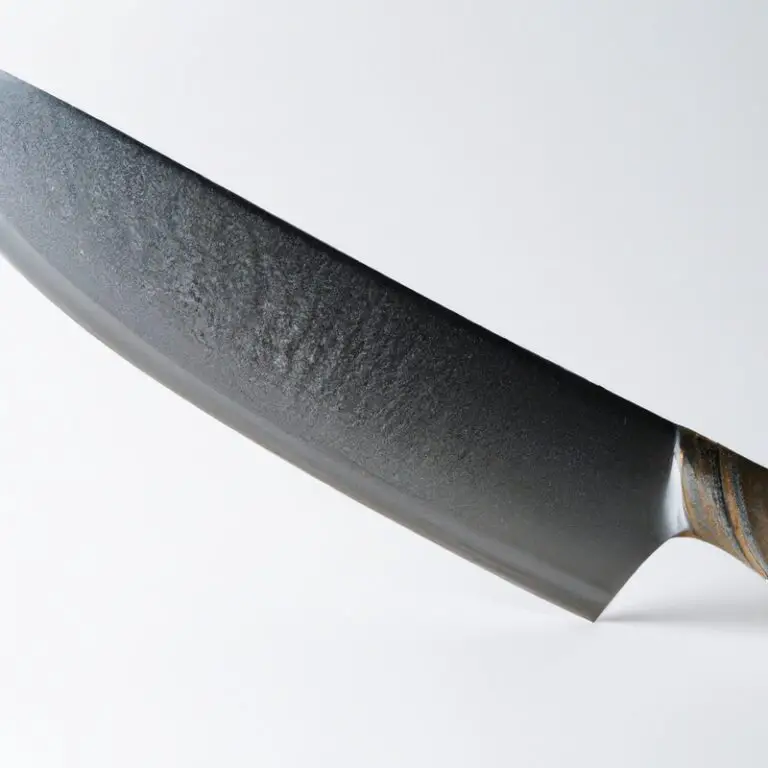Can You Use a Santoku Knife For Butterflying Chicken Breasts? How-To
Key Takeaways:
- Santoku knives can be used for butterflying chicken breasts, but may not be as effective as a dedicated poultry shears.
- It is important to use a sharp and sturdy knife when butterflying chicken breasts to ensure a clean and even cut.
- Prioritize safety when using any cutting tool and ensure that you have a secure grip on the knife to prevent accidents.
- Practice and technique are key to achieving a successful butterflied chicken breast, regardless of the type of knife used.
Are you looking to up your cooking game by mastering the art of butterflying chicken breasts? If so, you’ve likely wondered what type of knife is best suited for this technique.
While the chef’s knife may be the go-to for many, the Santoku knife has been rising in popularity for its versatility in the kitchen.
But can it efficiently butterfly chicken breasts? As someone who has mastered this technique with a Santoku knife, let me walk you through the pros and cons and provide some tips for safe handling and optimal performance.
| Knife Type | Use for Butterflying Chicken Breasts |
|---|---|
| Santoku Knife | Yes |
| Chef’s Knife | Yes |
| Boning Knife | Optimal |
Understanding the Santoku Knife: Features and Benefits of a Versatile Blade
The Santoku knife is a versatile blade that originates from Japan. Its name translates to “three uses,” referring to its ability to slice, dice, and mince.
The Santoku knife features a shorter blade than a traditional Chef’s knife, typically around 5-7 inches in length, and has a flatter blade profile, making it ideal for chopping, dicing, and slicing vegetables and meats.
One of the key benefits of using a Santoku knife for butterflying chicken breasts is its sharp edge, which allows for precise cuts. Additionally, its flat blade profile provides a consistent and even cut, ensuring that the chicken breast cooks evenly.
Another benefit of the Santoku knife is its ergonomic design, which allows for a comfortable grip and reduces hand fatigue while working on larger projects such as butterflying several chicken breasts at a time.
Overall, the Santoku knife is an excellent choice for butterflying chicken breasts, but it is important to consider factors such as the size of the chicken breast, the thickness of the blade, and the specific technique used for butterflying.
The Technique of Butterflying Chicken Breasts: Tips for Achieving the Perfect Cut
Butterflying chicken breasts can be a tricky technique to perfect, but using the right tools and following a few tips can make all the difference. When using a Santoku knife for butterflying, it’s important to keep the following tips in mind:
- Start with a sharp Santoku knife to ensure a clean cut.
- Hold the chicken breast steady and slice through the thickest part of the breast horizontally.
- Be careful not to cut all the way through the chicken breast.
- Open the breast like a book and flatten evenly.
- Use a meat mallet or rolling pin to even out the thickness of the chicken breast.
By following these tips, you can achieve the perfect butterflied chicken breast with a Santoku knife. Practice makes perfect, so keep honing your technique to master the art of butterflying.
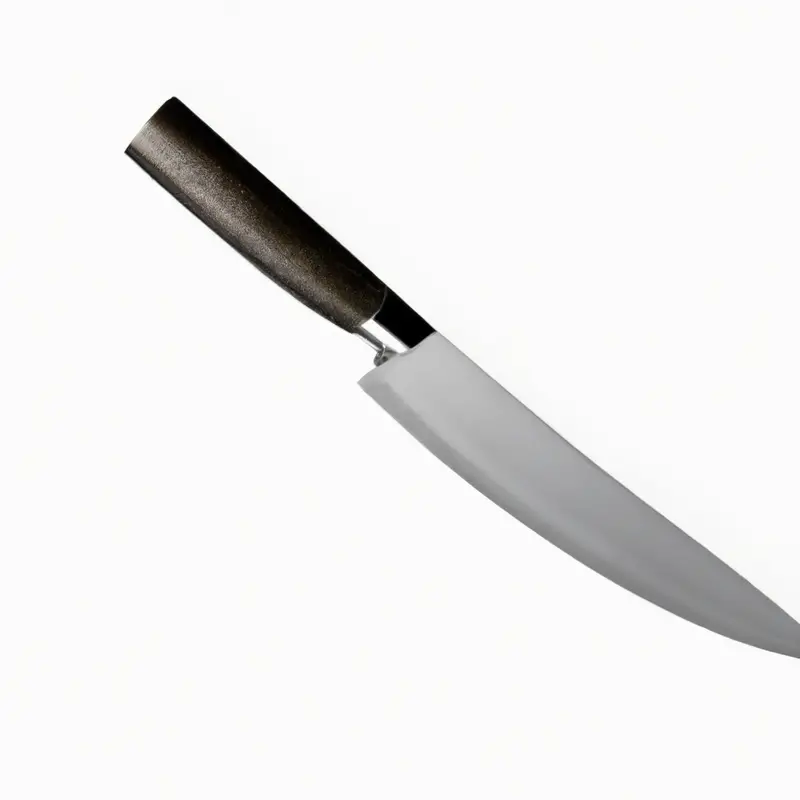
Pros and Cons of Using a Santoku Knife for Butterflying Chicken Breasts
Pros:
- Versatility: Santoku knives are versatile and can perform various cutting tasks, including butterflying chicken breasts.
- Comfort: Santoku knives have a comfortable grip, making it easy to handle and providing precision while cutting.
- Sharpness: Santoku knives are sharp, and their blade is thin, allowing for a smooth, clean cut.
Cons:
- Length: Santoku knives are shorter than chef’s knives, making it difficult to cut through larger chicken breasts.
- Blade shape: Unlike a chef’s knife, a Santoku knife has a flat edge, which may not be ideal for butterflying chicken breasts.
- Thin blade: A Santoku knife’s blade may not be thick enough for tougher chicken meat, potentially causing the blade to bend or become damaged.
Overall, using a Santoku knife for butterflying chicken breasts can be a great option, but it is important to consider the cons mentioned before making a decision.
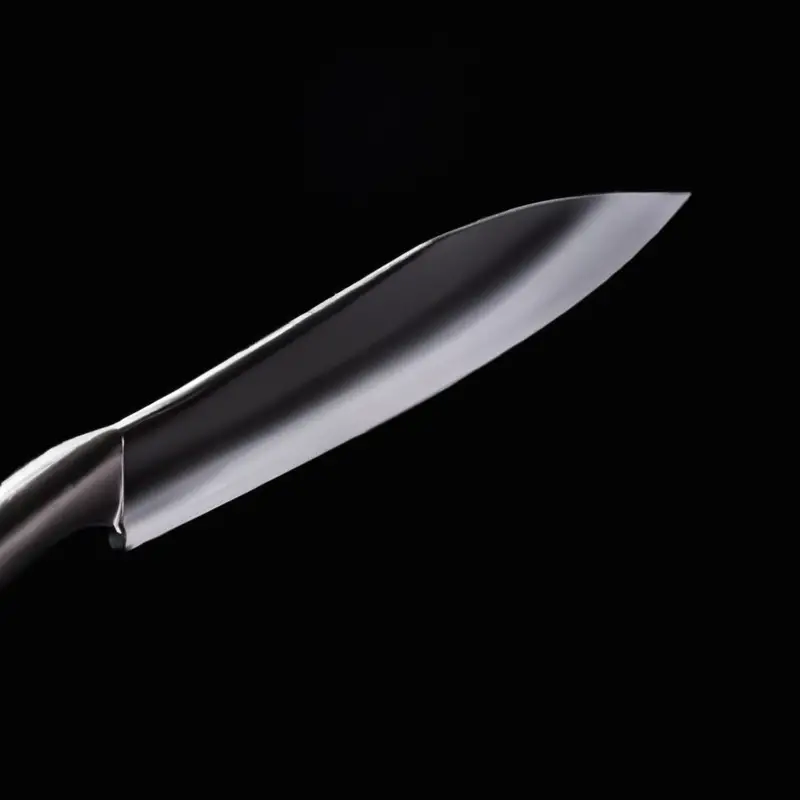
Santoku vs. Chef’s Knife: Which is Better for Butterflying Chicken Breasts?
Both Santoku and Chef’s knives are suitable for butterflying chicken breasts. However, there are some key differences between them that can affect the ease and precision of the cutting process.
A Santoku knife’s shorter blade makes it well-suited for smaller cuts like chicken breasts.
It also has a thinner blade than a Chef’s knife, which can lead to more precision when making thin slices. However, the blade’s flat edge can make it more difficult to rock back and forth, which is needed for some techniques.
On the other hand, a Chef’s knife has a longer, heavier blade that can handle larger cuts of meat.
Its curved blade also allows for more rocking motion, which can make it easier to cut thicker chicken breasts. Ultimately, the choice between a Santoku and Chef’s knife for butterflying chicken breasts comes down to personal preference and what feels comfortable to the user.
Both knives can be used effectively with the proper technique.
Safety First: How to Handle a Santoku Knife for a Precise Butterfly Cut
Safety is paramount when handling any sharp object, and the Santoku knife is no exception. Here are some important safety tips to keep in mind when using a Santoku knife for butterflying chicken breasts:
- Always use a cutting board that is sturdy and won’t slip during use.
- Make sure your Santoku knife is sharp and in good condition before use.
- Hold the handle of the knife firmly and keep your non-dominant hand away from the blade.
- Use a sawing motion to cut through the chicken breast, being careful not to apply too much pressure or force.
- Keep your fingers tucked in at all times, especially when making the initial cut.
- When finished, clean the knife immediately and store it safely away from children and pets.
By following these simple safety tips, you can use your Santoku knife with confidence and precision to achieve the perfect butterfly cut for your chicken breasts.
Practice Makes Perfect: Step-by-Step Guide to Butterflying Chicken Breasts with a Santoku Knife
To butterfly a chicken breast with a Santoku knife, follow these simple steps:
- Place the chicken breast on a cutting board and hold it in place with one hand.
- Insert the tip of the knife into the thickest part of the chicken breast, about half an inch from the edge.
- Slowly and carefully slice through the chicken breast, keeping the knife parallel to the cutting board.
- Stop about a quarter of an inch from the other edge of the chicken breast.
- Open up the chicken breast like a book and lay it flat on the cutting board.
- Use the flat side of the knife to gently pound the chicken breast to an even thickness.
With practice, you can achieve a perfectly butterflied chicken breast every time using a Santoku knife.
Using the Right Board for Cutting: Recommendations for Safe Butterflying
Choosing the right cutting board is important for safe and efficient butterflying of chicken breasts with a Santoku knife. Look for a board that is sturdy, flat, and large enough to accommodate the chicken breasts without them hanging off the edge.
Avoid using glass or marble cutting boards as they can damage the knife edge.
Wooden cutting boards are a popular choice as they are gentle on the knife edge and have natural anti-bacterial properties. However, it is essential to clean and sanitize wooden cutting boards thoroughly after each use to prevent cross-contamination.
Plastic cutting boards are another option as they are easy to clean and sanitize.
Look for a plastic cutting board that is at least 1/2 inch thick to prevent it from slipping during use. Ultimately, whichever cutting board you choose, make sure to clean it thoroughly after each use and replace it when it becomes worn or damaged to ensure safe and hygienic food preparation.
Maintaining Your Santoku Knife for Optimal Performance While Butterflying Chicken Breasts
Maintaining your Santoku knife is crucial to ensure optimal performance while butterflying chicken breasts. Here are a few tips for keeping your blade in top condition:
- Clean your knife with soap and warm water immediately after using it. Dry it thoroughly before storing it.
- Avoid using abrasive tools or materials to clean your knife, as they can damage the blade.
- Sharpen your knife regularly using a honing rod or sharpening stone to maintain its sharpness.
- Store your knife in a knife block or sheath to prevent any damage or dulling of the blade.
- Use a cutting board made of soft materials such as wood or plastic to avoid damaging the blade.
By following these maintenance tips, you can ensure that your Santoku knife remains sharp, in excellent condition, and ready for efficient butterflying of chicken breasts.
Avoiding Mistakes When Using a Santoku Knife for Butterflying Chicken Breasts: Common Errors to Watch For
While using a Santoku knife for butterflying chicken breasts, there are some common mistakes one must avoid, including:
- Incorrect Blade Placement: Placing the knife parallel to the cutting board or not positioning the blade at the center can ruin the butterfly cut.
- Uneven Cutting: Cutting one part of the chicken breast too much and the other too little is avoidable by starting from the thickest side and working towards the thinner side.
- Overcutting: Overcutting the chicken breast may result in uneven cooking and dry meat. One should be careful while cutting and stop at the right thickness.
- Not Cleaning the Blade: A dirty blade can introduce bacteria into the meat, risking foodborne illnesses and affecting the taste. Clean and sanitize the knife before and after use.
- Dull Blade: A dull blade not only makes it harder to cut but also causes ripping and tearing of the meat. Sharpening the Santoku knife before use is crucial.
By avoiding these mistakes, one can butterfly chicken breasts to perfection using a Santoku knife.
Alternatives to the Santoku Knife: Other Knives to Consider for Butterflying Chicken Breasts
While the Santoku knife is great for many kitchen tasks, including butterflying chicken breasts, there are other knives that can be used for the same purpose. Here are some alternatives to consider:
- Chef’s Knife – The chef’s knife is similar to the Santoku knife, but has a longer, wider blade that allows for more precise cuts. It is a great option for those who prefer a heavier knife.
- Fillet Knife – The fillet knife has a narrow, flexible blade that is perfect for slicing through chicken breasts. It is also great for filleting fish.
- Paring Knife – While not ideal for larger cuts of meat, the paring knife can be used for smaller chicken breasts or for more intricate cuts.
It is important to note that the key to a successful butterfly cut is a sharp knife. No matter which knife you choose, make sure it is sharp and well-maintained for optimal performance.
Final Verdict
Using a Santoku knife for butterflying chicken breasts can be a great option for those who value versatility and precision in their kitchen tools. While it may not be the traditional choice, the unique features of the Santoku knife can make it a valuable addition to your collection.
By following proper safety techniques, mastering the butterfly cut and caring for your knife, it can provide high performance and reliable results.
However, it is important to consider your personal preferences and needs before making a decision, and to always prioritize safety and accuracy in your cutting technique. Overall, with practice and attention to detail, a Santoku knife can be a valuable tool in perfecting your butterflying skills.

